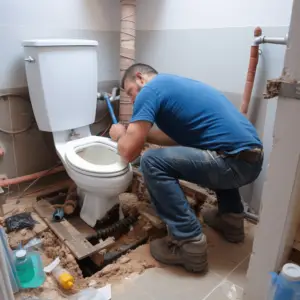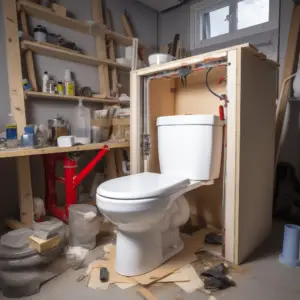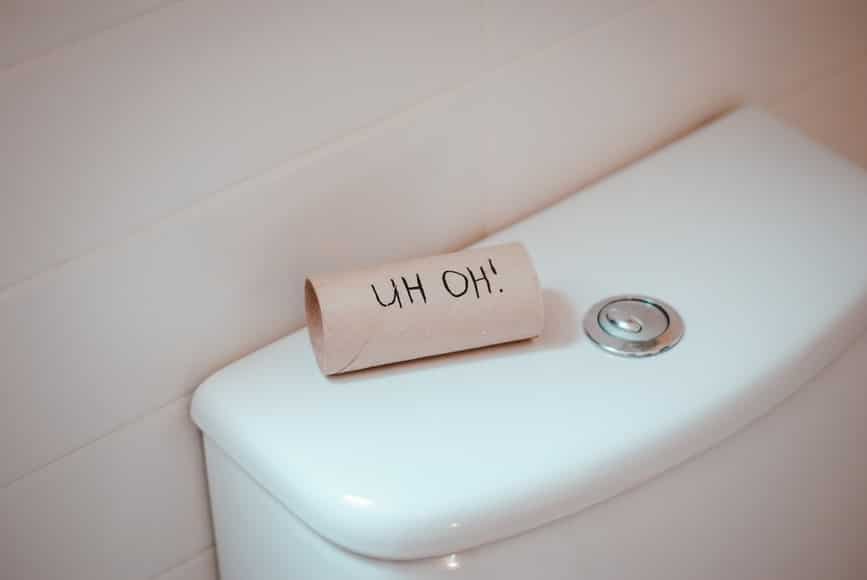Some toilets are installed just so unlevel that you have a good chance of falling off the side before you finish your business. The good news is that leveling a toilet requires no plumbing skills or special tools, and can be done in less than two hours.
However, whether you’re installing a new toilet in your home, or resetting an existing one after noticing a distinctive wobble, you’re probably wondering just how important it is that your toilet has to stay level. Keep reading to learn more about the risk associated with unleveled toilets.
Table of Contents
So, Does a Toilet Need to Be Level?

Absolutely yes. Besides, evening out a toilet isn’t that a hassle, and most homeowners comfortable with little DIY tasks can do it all alone. If a toilet is not lever and keeps rocking side-to-side or back and forth, it can cause damage to the wax seal and flange, leading to leaks at the base.
You might not be able to see the leak, but an extremely damaged seal will leak waste. That’s why it’s best to ensure that your toilet is level when installed. Below are the various reasons why your leaky toilet is a big concern to your home.
First, it’s incredibly unhygienic: Remember the water leaking by the wax seal is not only water; it contains waste as well.
Another thing is that the floor around the toilet will become damaged and eventually the floors near your toilet. The wood could become very much weakened such that the structure of the entire bathroom is compromised.
Moreover, the leaking waste could cause damage to the ceiling if your toilet is on a floor above the basement.
So yes, to keep your home safe and in decent form, your toilet needs to be level.
What Causes Unleveled Toilets
There are several reasons why your toilet is unlevel. Maybe the toilet has been level for years and is suddenly unlevel. Or perhaps, it was unleveled during installation. In any case, it’s important to know some of the reasons that your toilet could be unlevel. Only then you’ll know how to fix them the right way.
Unlevel Floor: This is very common, especially in older homes. Floors can be uneven. Even a slightly unleveled floor can cause problems for your toilet.
Flange Problems: Note that the flange should be fixed on top of the floor, not below it. Meanwhile, bolts should hold the flange securely in place, so that they are not damaged or corroded.
Loose Bolts: Unfastened bolts mean that the toilet will wobble. Simple.
Even so, how do you know what the problem is? Well, you’ll need to remove the toilet, check the flange and wax seal, fix the problem and reinstall the toilet. In case this doesn’t sound like something you want to deal with, simply call a professional plumber to help resolve the issue.
However, if you’re ready for a little DIY project, we have some guidelines on how to take action.
Leveling a Toilet
In the event that your toilet is already installed and starts to wobble whenever you use it, finding out the source of the problem is simple, but it’s a process. But fret not because you don’t have to be an experienced handyman to fix the unstable toilet.
Depending on how uneven the toilet is, you might have to make simpler adjustments or in some cases dismantle the toilet. Provided you have the right tools, you can level the whole thing yourself without much of a struggle.
Inspect the Current Level of the Toilet
Before you jump into fixing the issue, check how uneven your toilet is. Place a short level, such as a two-foot level on the top of the toilet tank, then lift the level until the bubbles sit between the two lines on the vial.
The distance between the bottom of the level and the top of the toilet will tell you just how much unlevel your toilet is. This should give you an idea of how much you will need to shim.
Remove the Toilet
Removing the toilet is obviously wet work, and you might feel more comfortable wearing gloves while doing this. Turn off the water supply, remove the tank lid, and carefully put it in a location where it will not get broken.
Remember to flush the toilet to eliminate as much water as possible from the tank. Then use a wet super-absorbent sponge or old towels to draw any water left in the toilet. Cut off the water supply and place a bucket under it to catch any water that might still be in the line.
Proceed and unbolt the toilet from the floor. There should be two bolts; one on each side of the toilet. Mostly, these bolts are covered with a plastic cap. So, remove the cap and unscrew the bolts. Then carefully lift the toilet straight up off the bolts and set it aside. It’s best to place it on thick plastic sheeting or garbage bags.
Check the Wax Seal and Flange
You will have to remove the wax seal to inspect whether the flange and the wax seal need to be replaced. Are there bolts in each bolt hole? Are the bolts secured or is the flanged corroded? These are the things you need to make certain of.
While wax seals are inexpensive, replacing them when you have a chance is a nice idea. You may also replace the wax seal with a foam ring if you prefer.
Put the Toilet Back

Once you have fixed all the issues with the flange, loose bolts, and the wax seal, you can then reinstall the toilet. If the toilet is unlevel due to an uneven floor, you will need to fix that with shims as follows:
Put back the closet bolt with a lock washer. We recommend that you use a fresh set of these. Place the foam ring or wax seal. Wax rings can be a bit tricky to place, so you might want to go with the foam ring.
Put the toilet back onto the bolts. It’s best to have an extra set of eyes to make sure you’re placing the toilet over the bolts as expected.
In case the floors were the problem, you can now add shims under the side of the toilet that is low. Note that the shims should not be wood; otherwise, they’d rot over time. There are shims that are specially designed for use under toilets. They are plastic, small, stackable, making them a usable choice.
Check Again the Level of the Toilet
Examine the level of the toilet again to ascertain that any changes made actually worked. Then bolt the toilet to the floor. Remember to install the bolt cover as it helps to keep the bolt in position. Avoid tightening down one side first; instead, fasten each side a little at a time.
Remove the excess closet bolt and return the tank lid. Reconnect the water supply and give the toilet a few test flushes to see if it works.
At this point, your toilet should be wobble-free and working properly. Then clean up any mess. You might want to use caulk or putty around the base of the toilet for a finished look.


